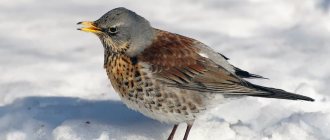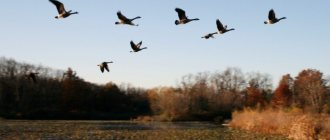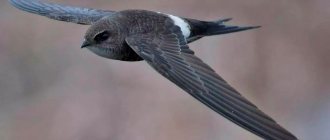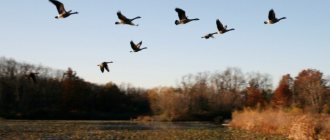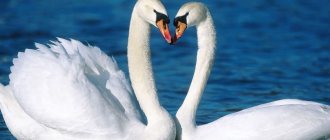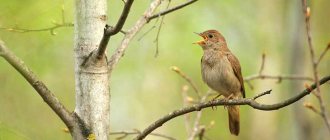Birds are amazing and interesting creatures that amaze with their beauty and abilities. They have excited human consciousness since the time of Aristotle and were sung in the poems of the poets of ancient Greece.
From time immemorial, many have been concerned with the following questions: “Why and what birds migrate to the south? How do they find their way to warmer climes? How do they know when it’s time to fly?”
We will try to find out in this article why and when cranes, one of the most beautiful birds in the world, fly south.
According to the well-known folk calendar, September 13 is the Crane Assembly or Kupriyanov’s Day. Cranes leave their homes on this day.
When will the cranes arrive?
“The cranes are expected to arrive on March 28-April 1, and maybe earlier. The date of arrival of the crane depends on the date of snow melt; they arrive when the ice is breaking up along the river,” said the agency’s interlocutor.
Interesting materials:
Which planet rotates on its side? Which of the presented rocks is loose? What is the calorie content of boiled beans? Which potatoes are better for frying, yellow or red? What acid eats away rust? What is the longest key on a computer keyboard? Which button on a laptop deletes? What is the shift button on a laptop? What gas concentration is considered dangerous? What concentration of natural gas in a room is explosive?
Population and species status
Experts have noticed that populations that migrate with the onset of autumn to warmer climes have fewer and fewer young birds in their composition. This negative fact is due to the fact that more and more floods occur in the spring, which spoil the vegetation in fields and meadows, leaving birds without food. Many nests with clutches of eggs are destroyed by various predators.
Due to such depressing facts, half of the species are on the verge of extinction. This order of things forced the countries in which cranes live to take up the protection of these birds. Two species today are candidates for joining the list of birds that are at risk of extinction. Among various reasons, there are facts of drying out of swamps and other bodies of water, which previously served as natural habitats for cranes. Nowadays, it is forbidden to hunt these birds, although many farmers are not happy that cranes feed on their crops.
To preserve these birds for our descendants, in many countries there are teams of volunteers who help nursery workers with the preparation of feed, and also assist in economic activities.
Grey
This amazing bird also lives in our country. Directly in Russia there is a gray crane. It is worth noting that of all the representatives of the family, gray cranes have the longest legs. They usually live near bodies of water or where there are swamps. A very interesting fact is that cranes choose a partner for life. That is, they may be true. During the mating season, birds perform incredibly beautiful mating dances. This is truly a very worthwhile spectacle. At the same time, partners make movements with their wings. These are such amazing and interesting birds.
It is also worth saying that there are a great many species of crane. Of course, each of them has some unique features, its own unusual history and, of course, appearance.
Where do swans winter?
Depending on their nesting area, swans
They fly south or stay for
the winter
. Migratory populations include populations nesting in the countries of Northern Europe and the Baltic, in Russia, and in the central regions of China. For the winter, birds fly to the shores of the Black and Caspian Seas, to the south of Turkey and Greece, to the islands of the Pacific Ocean.
Interesting materials:
How does a water heating system work? How do ducks eat each other? How to enlarge a chart in PowerPoint? How to increase electrical power at the dacha? How to enlarge icons on the screen? How to enlarge icons on Samsung? How to enlarge icons on Xiaomi? How to enlarge application icons? How to increase the number of pages in a diploma? How to increase the power of an electric meter?
Important facts
In this article, we examined in great detail the question of where the cranes fly. From all of the above, we found out that they fly to various places on our vast planet. A prerequisite is good weather conditions and proximity to water bodies. Yes, these birds love warmth very much. Therefore, they always strive to spend their lives in sunny places. Also, as we have already said, they are also encouraged to fly away by the search for food, which they so need at a certain time, when there is no such opportunity in cold regions.
Let's remember once again where cranes fly to for the winter, to what regions? So, those who live in the European part of Russia go to Algeria or, as we have already said, to Spain. There they will be provided with food and warm, favorable weather conditions. Cranes from Eastern Siberia fly to Southern China. Blacks go to Southeast Asia.
Interesting Facts
There are many varied and amazing facts about these birds. Let's try to talk about them in this article.
In Armenia, this bird is considered a symbol of the country; these wonderful creatures live for about twenty years; if they are kept in artificial conditions, then about eighty years. It must be said that this is a very long time for birds in principle. In China, this bird is a symbol of spiritual purity, devotion, and beauty. In Japan, there is a belief that if you make 1000 paper cranes (origami), a person will be cured of any disease. In Russia, we also have quite a lot of references to these birds in children's fairy tales, riddles, and poems. Previously, when the cranes returned from warm places, people rejoiced, it was a real holiday.
A little history
When we started talking about this wonderful bird, we completely forgot to tell a couple of interesting facts about their history and ancestry. The American continent is considered to be the historical homeland of these birds. After that they ended up in Asia, Africa, then Australia. Very often we see pictures of these birds flying like a wedge across the sky. But it must be said that they do this only if the wind interferes with the flight. When the birds are about to fly away, they make stops along the way to rest.
Mating dance
When the male wants his beloved to turn her attention to such a handsome man, he begins to perform an incredibly graceful dance. He flaps his wings, jumps up, leaves the ground, and throws grass into the air. In general, the spectacle is truly spectacular. A funny thing happens after this: he makes a sound. The female must repeat it, only twice. It all looks amazing.
In flocks, these birds live very peacefully. During sleep, they choose a “guardian” for themselves. It is he who will oversee the peace and lack of security for the rest.
Why do they fly away?
Sometimes people have to see a wedge flying across the sky in an unknown direction. The thing is that when cold weather sets in, cranes fly to warmer places. They love to stay and spend time where the temperature does not drop below zero.
Another very important circumstance is that in cold times it is quite difficult to obtain food, and, as you know, the soil freezes in winter. Then getting something tasty out of it is a very troublesome task.
Why don't they sit on trees?
Also, cranes do not perch on trees. This happens because the bird cannot maintain its balance. After all, she weighs quite a lot. There is one exception - there are also crowned cranes. They have some peculiarity in the structure of their body - they have a back finger, it is designed to grab certain objects. By the way, this crane has a very interesting appearance. His eyes are blue, and on his head there is a crest that reminds us of a crown. This bird molts once a year; this usually happens at least once a year. The moment a bird begins to molt, it stops flying.
The relationships between the sexes in these birds are very interesting. As we said earlier, cranes are very loyal. They are able to be close to their partner all their lives; this can only be changed by her death or some other reason.
Migratory birds in spring
Oh, how nice it is in the forest! Smells like spring. The snow is melting, the first insects appear. Trills, chirping and birdsong can be heard. After all, the birds that flew to warmer regions in the fall return to their homeland. They enjoy the warmth and sunshine.
Rooks are among the first to arrive. This usually happens in March.
In the old days they said: “If you see a rook, welcome spring!”
The rook is a large black bird with a purple tint. It looks like a carrion crow, but the rook's beak is lighter and the skin around the beak is devoid of feathers. The rook can be up to fifty centimeters in length. Rooks usually live in large colonies, with several dozen nests on one tree.
Rooks build their nests from twigs, lumps of clay, moss, and dry grass.
Rooks communicate with their relatives by cawing loudly.
Starlings follow the rooks. Among the people there was such a sign: “If you see a starling, you know spring is at the porch.”
The starling is a small but very beautiful bird. Its black feathers have a metallic reddish, purple, greenish sheen. There are also white spots scattered here and there.
Everyone knows that starlings are useful birds. They walk on the ground with their heads down, looking for food. With their long beaks they grab beetles, weevils, caterpillars and other insects.
When starlings arrive, people make houses for them - birdhouses. But starlings can also settle in tree hollows and in the voids of outbuildings.
The starling's spring song is good. What sounds can you hear in his song! Starlings can imitate the voices of many birds and animals. In the singing of a starling you can hear the ringing trill of a nightingale, the quack of a wild duck, and the croaking of frogs.
In the old days in Rus' it was believed that birds brought spring on their wings. There was a custom in March to sculpt and bake lark birds from dough. They were attached to long sticks, the children ran out onto the hills with them and sang Russian folk songs:
Larks, come, take away the cold winter, bring the warmth of spring: We are tired of winter, we have eaten all our bread!
A lark is a bird slightly larger than a sparrow. The lark's feathers are grayish-brown, with dark stripes and spots. And the tummy is light. There is a small crest on the head, and the tail is edged with white feathers.
This coloring makes the lark invisible among tufts of grass and plant stems. After all, larks build their nests right on the ground, among the grass.
Larks arrive at the end of March - beginning of April, when the snow begins to melt.
The fields have not yet turned green, but the larks in the blue sky are already fluttering their wings and singing joyfully. Their song sometimes resembles a trill, sometimes like the ringing of bells.
In April, another small bird arrives - the wagtail.
Why did the wagtail get such a strange name? Running on the ground, she constantly shakes her tail with a long tail. The tail is the back part of the body of birds. There is a popular saying: “a wagtail breaks the ice with its tail.” After all, these restless birds arrive when the ice on the rivers begins to break. That is why the wagtail is called an icebreaker.
The song of wagtails is melodic, but simple. Male wagtails sometimes chirp quietly, sometimes squeak quietly, sometimes chirp loudly.
But this brightly colored bird is a finch. The top of his head is bluish-blue, and his chest is light red. But why was the chaffinch called a chaffinch? Maybe because he is freezing, that is, chilly? Not at all. The finch simply flies away in late autumn and arrives in early spring, when it is still very cold and chilly outside.
Finches are not afraid of anything. They can look for food right under a person's feet. And when they sing their wonderful songs, they don’t notice anything or anyone around them. There is a Russian saying that the lark sings for warmth, and the finch sings for frost.
Blackbirds also arrive in April.
Blackbirds usually make their nests on small spruce trees or on juniper bushes. And sometimes even on the ground, in piles of brushwood. There the female lays from three to six bright blue eggs with sparse dark specks.
Song thrushes are considered remarkable singers. Their singing resembles the trills of a nightingale.
In April, other migratory birds also arrive: kites, swans, geese, ducks, herons, cranes, and little warblers.
But in May, swallows, flycatchers, nightingales, orioles, and swifts arrive from warm countries.
For a long time, people have had a special attitude towards the swallow. There are many beliefs associated with it. People say: “An early swallow means a happy year.” A house with a swallow's nest is considered lucky.
Urban white-breasted swallows make their nests under the eaves of stone and wooden houses. Killer whale swallows nest under the roofs of village barns and houses. Shore swallows are found in burrows, which they dig with their sharp claws in the steep slopes of the river bank. Swallows spend almost their entire lives in flight. They very rarely fall to the ground, because their short legs are not adapted to walking on the ground.
The swallow has an elongated body, narrow long wings and a long forked tail.
The chirping of swallows is difficult to hear in the city. Her voice is quiet. And from time to time the chirping is replaced by crackling.
But the nightingale is rightly called one of the best singers. Looking at this small, inconspicuous bird, it is difficult to believe that such wonderful sounds can be produced from such a fragile body. The nightingale is small, but the voice is great.
The nightingale is a very slender, graceful bird, painted in uniform reddish-brown tones. He has rather high legs and a graceful figure. The nightingale has very large dark, almost black eyes.
But this bird is slightly larger than a starling. Look how bright the yellow plumage is! And the wings and tail are black. Moreover, there is a black stripe from the beak to the eyes. And the beak is reddish. This is a male oriole.
But the female oriole looks more modest. Her feathers are not bright yellow, but greenish.
Orioles are wonderful singers. Their singing resembles the sounds of a flute. But sometimes an oriole, worried about something, makes unpleasant sounds reminiscent of a cat meowing.
The swifts arrive later than everyone else. Swifts can be seen in almost every corner of the earth, except Antarctica and several islands. These birds are very similar to swallows. Sometimes they are even confused. But distinguishing a swift from a swallow is quite simple. Swallows have a white breast, while swifts have only a white spot under the beak. The wings of a swift are longer and narrower than those of a swallow. But the tail is wider and shorter.
The swift is the champion among all birds in terms of flight speed. It can reach speeds of up to one hundred and seventy kilometers per hour. But on the ground, these incomparable flyers waddle with difficulty on their short legs, helping themselves with the ends of their wings.
Swifts fly over houses with loud, piercing screams. They seem to tell everyone that warm summer weather has arrived.
Yes, what wonderful creatures birds are!

